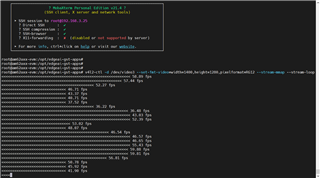Tool/software:
pipeline_and_statistics.zip We found that the tiovxldc plugin has an impact on the framerate of the video pipeline when running a dual camera video streaming pipeline. We are using x3c camera with a resolution of 1920 * 1280 and a framerate of 60. The cameras are mounted as/dev/video3 and/dev/video4 respectively in linux. We tested two scenarios separately:
1. Using only the tiovxisp plugin.
2. Simultaneously using tiovxisp and tiovxldc plugins.
In the first scenario, the video stream can maintain a framerate of 60, while in the second scenario, both camera pipelines will experience a decrease in framerate and there is a phenomenon of flickering on the screen. The attachment contains the framerates and hardware load of various plugins printed using the detection tool provided by TI. We would like to know the reasons for this phenomenon.




